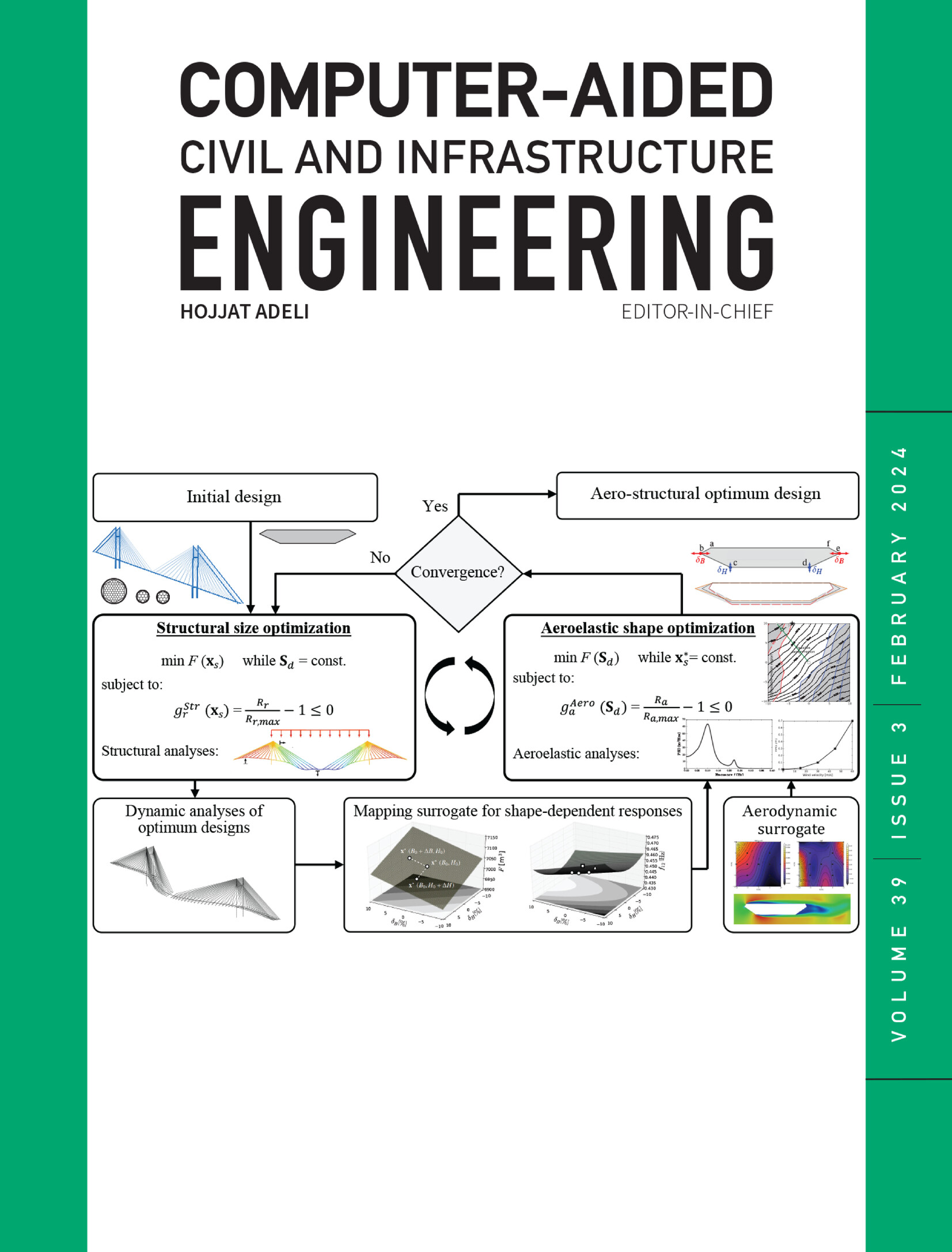Traffic estimation in work zones using a custom regression model and data augmentation
IF 8.5
1区 工程技术
Q1 COMPUTER SCIENCE, INTERDISCIPLINARY APPLICATIONS
引用次数: 0
Abstract
Accurately estimating traffic volumes in construction work zones is crucial for effective traffic management. However, one of the key challenges transportation agencies face is the limited coverage of continuous count station (CCS) sensors, which are often sparsely located and may not be positioned directly on roads where construction work zones are present. This spatial limitation leads to gaps in traffic data, making accurate volume estimation difficult. Addressing this, our study utilized a custom regularized model and variational autoencoders (VAE) to generate synthetic data that improves traffic volume estimations in these challenging areas. The proposed method not only bridges the data gaps between sparse CCS sensors but also outperforms several benchmark models, as measured by mean absolute percentage error, root mean square error, and mean absolute error. Moreover, the effectiveness of VAE-augmented models in enhancing the precision and accuracy of traffic volume estimations further underscores the benefits of integrating synthetic data into traffic-modeling approaches. These findings highlight the potential of the proposed approach to enhance traffic volume estimation in construction work zones and assist transportation agencies in making informed decisions for traffic management.使用自定义回归模型和数据增强对工作区域的流量进行估计
准确估计施工区域的交通量对于有效的交通管理至关重要。然而,交通运输机构面临的主要挑战之一是连续计数站(CCS)传感器的覆盖范围有限,这些传感器通常分布稀疏,可能不会直接放置在施工区域存在的道路上。这种空间限制导致了交通数据的空白,使准确的体积估计变得困难。为了解决这个问题,我们的研究使用了一个定制的正则化模型和变分自编码器(VAE)来生成合成数据,以改善这些具有挑战性的地区的交通量估计。该方法不仅弥补了稀疏CCS传感器之间的数据差距,而且通过平均绝对百分比误差、均方根误差和平均绝对误差来衡量,其性能优于几种基准模型。此外,vae增强模型在提高交通量估计的精度和准确性方面的有效性进一步强调了将合成数据集成到交通建模方法中的好处。这些研究结果突出了拟议方法的潜力,可以提高建筑工作区的交通量估算,并协助运输机构为交通管理做出明智的决策。
本文章由计算机程序翻译,如有差异,请以英文原文为准。
求助全文
约1分钟内获得全文
求助全文
来源期刊
CiteScore
17.60
自引率
19.80%
发文量
146
审稿时长
1 months
期刊介绍:
Computer-Aided Civil and Infrastructure Engineering stands as a scholarly, peer-reviewed archival journal, serving as a vital link between advancements in computer technology and civil and infrastructure engineering. The journal serves as a distinctive platform for the publication of original articles, spotlighting novel computational techniques and inventive applications of computers. Specifically, it concentrates on recent progress in computer and information technologies, fostering the development and application of emerging computing paradigms.
Encompassing a broad scope, the journal addresses bridge, construction, environmental, highway, geotechnical, structural, transportation, and water resources engineering. It extends its reach to the management of infrastructure systems, covering domains such as highways, bridges, pavements, airports, and utilities. The journal delves into areas like artificial intelligence, cognitive modeling, concurrent engineering, database management, distributed computing, evolutionary computing, fuzzy logic, genetic algorithms, geometric modeling, internet-based technologies, knowledge discovery and engineering, machine learning, mobile computing, multimedia technologies, networking, neural network computing, optimization and search, parallel processing, robotics, smart structures, software engineering, virtual reality, and visualization techniques.

 求助内容:
求助内容: 应助结果提醒方式:
应助结果提醒方式:


